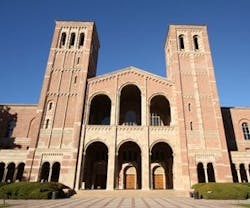Trends in Higher-Education Learning Spaces
Changes in learning paradigms and pedagogy surpassed student expectations as the most influential factor driving new learning space needs on campus, according to higher-education planning professionals in a March 2009 survey. It's the third survey produced by Herman Miller Inc. and the Society for College and University Planning (SCUP) to identify trends affecting higher-education learning spaces.
The survey results will be the focus of a presentation led by Jeff Vredevoogd of Herman Miller's Education Solutions team at the 2009 SCUP conference in Portland, OR, July 18-22, 2009.
According to Vredevoogd, higher-education institutions are realizing that they can no longer rely on preparing the students of tomorrow with yesterday's teaching methods and learning spaces.
"There is a connection between teaching, learning, and space," he says. "The best learning spaces, however, require an understanding of stakeholders, types of pedagogy that will occur in the space, and a careful, regular review of its key characteristics. These steps, together with the support of leadership for a variety of teaching and learning styles, will best equip students and faculty."
In addition, the most important measure of an effective learning space, according to 41 percent of respondents, is its range of flexibility or the number and types of learning activities that can occur within the space.
"There also is a focus on physical measures of either environmental quality or utilization statistics," adds Phyllis Grummon, director of Planning and Education for SCUP.
Only 21 percent of survey respondents, however, are required to measure the results of new or renovated learning spaces. As 58 percent of respondents are experiencing new construction and renovation on campus, Vredevoogd admits that, without effective measurement of learning spaces, campuses risk losing the opportunity to enable and enhance the teaching and learning experience for students and faculty.
"As higher-education leadership rethink or evolve their approach to learning spaces on campus, especially when it includes a significant investment in new construction or a renovation, they need to do more than make the space look aesthetically fresh. It's important to consider the impact of several factors, including changes in pedagogy and technology, in the long-term view of possibilities for the space," he says.
For a complete report of survey results, contact [email protected]
